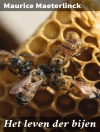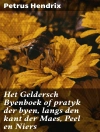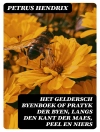This book provides an overview on the basics in insect molecular biology and presents the most recent developments in several fields such as insect genomics and proteomics, insect pathology and applications of insect derived compounds in modern research. The book aims to provide a common platform for the molecular entomologist to stimulate further research in insect molecular biology and biotechnology.
Insects are one of the most versatile groups of the animal kingdom. Due to their large population sizes and adaptability since long they attract researchers’ interest as efficient resource for agricultural and biotechnological purposes. Several economically important insects such as Silkworms, Honey Bee, Lac and Drosophila or Termites were established as invertebrate model organisms. Starting with the era of genetic engineering, a broad range of molecular and genetic tools have been developed to study the molecular biology of these insects in detail and thus opened up a new horizon for multidisciplinary research. Nowadays, insect derived products are widely used in biomedical and biotechnology industries.
The book targets researchers from both academia and industry, professors and graduate students working in molecular biology, biotechnology and entomology.
İçerik tablosu
Part 1. Insect Genomics and Proteomics.- 1. Molecular marker assisted selection breeding in silkworm. – 2. Molecular, neuronal and behavioral mechanism of communication among insects species.- 3. Monocyclic aromatic hydrocarbon (MAHs) induced toxicity in Drosophila: how far how close?.- 4. Tracing of evolution of Bombyx mori on the basis of molecular studies.- 5. Long non coding RNA: disclosing new horizon in molecular world of insects.- 6. Pathogen driven proteomic changes in hemolymph of Nuclear polyhedrosis virus infected Silkworm.- Part 2. Molecular Based Studies of Insect Pathology.- 7. Analysis of viral lytic polysaccharide monooxygenase, fusolin, and its potential application to pest control.- 8. Recent advances of disease monitoring in silkworm.- 9. Antiviral mechanism of serine protease against viral infection.- 10. Significance of insect derived baculovirus in research and therapeutics.- 11.Insect RNAi: Integrating a new tool for crop protection.- 12. Essential oil from Skimmia anquetilia affects egg laying behavior of insect Caryedon serratus (Olivier).- Part 3. Functions and Applications of Insect Derived Products.- 13. Research progress of insect origin fungus Cordycep.- 14. Application of recombinant insect products in modern research.- 15. Insect chitinolytic enzymes: structure, regulation and potential applications.-16. Relevance of insects in forensic science.- 17. Application of nanoparticles in modern insect molecular biology.- 18. Impact of nanotechnology in insect science
Yazar hakkında
Dr. Dhiraj Kumar completed his post-doctorate at the Molecular Biology Laboratory, School of Biology and Basic Medical Science, Soochow University, China, and selected as a visiting scientist in the prestigious Talented Young Scientist Programme of the Chinese Government. He also worked as an Assistant Professor at the Department of Zoology, Guru Ghasidas Vishwavidyalaya (A Central University), Bilaspur (C.G.), India. Dr. Kumar received a young scientist award and an outstanding paper award for his research contributions in biological science. He has published numerous research papers in renowned international journals including those from the Nature Publishing Group and has filed a patent for his new innovation. Presently Dr. Kumar’s research is focused on metagenomics, transgenic technology, and biomedical science.
Dr. Chengliang Gong is currently serving at Soochow University, China, as a Professor and Dean of the Department of Applied Biology, School of Biology and Basic Medical Science. He is also Vice President of the Sericultural Society of Jiangsu Province, China. Prof. Gong has carried out over forty research projects as a PI funded by various research funding organizations of China and has published more than fifty research papers in international journals. He has also obtained ten patents as the first inventor. His major research interests are in the areas of genetic manipulation, molecular biology, biochemistry, and pathology of insects and aquatic animals.












